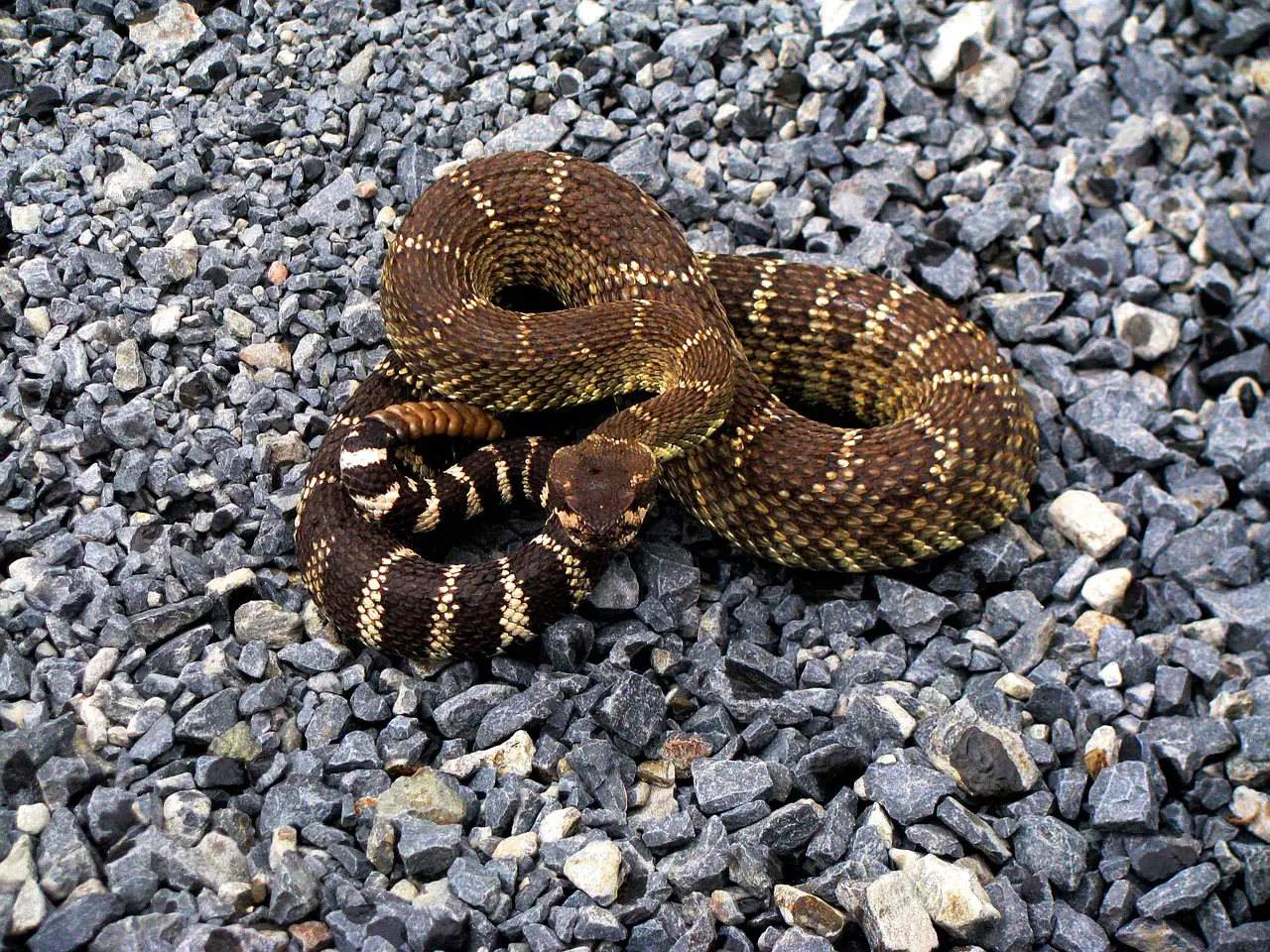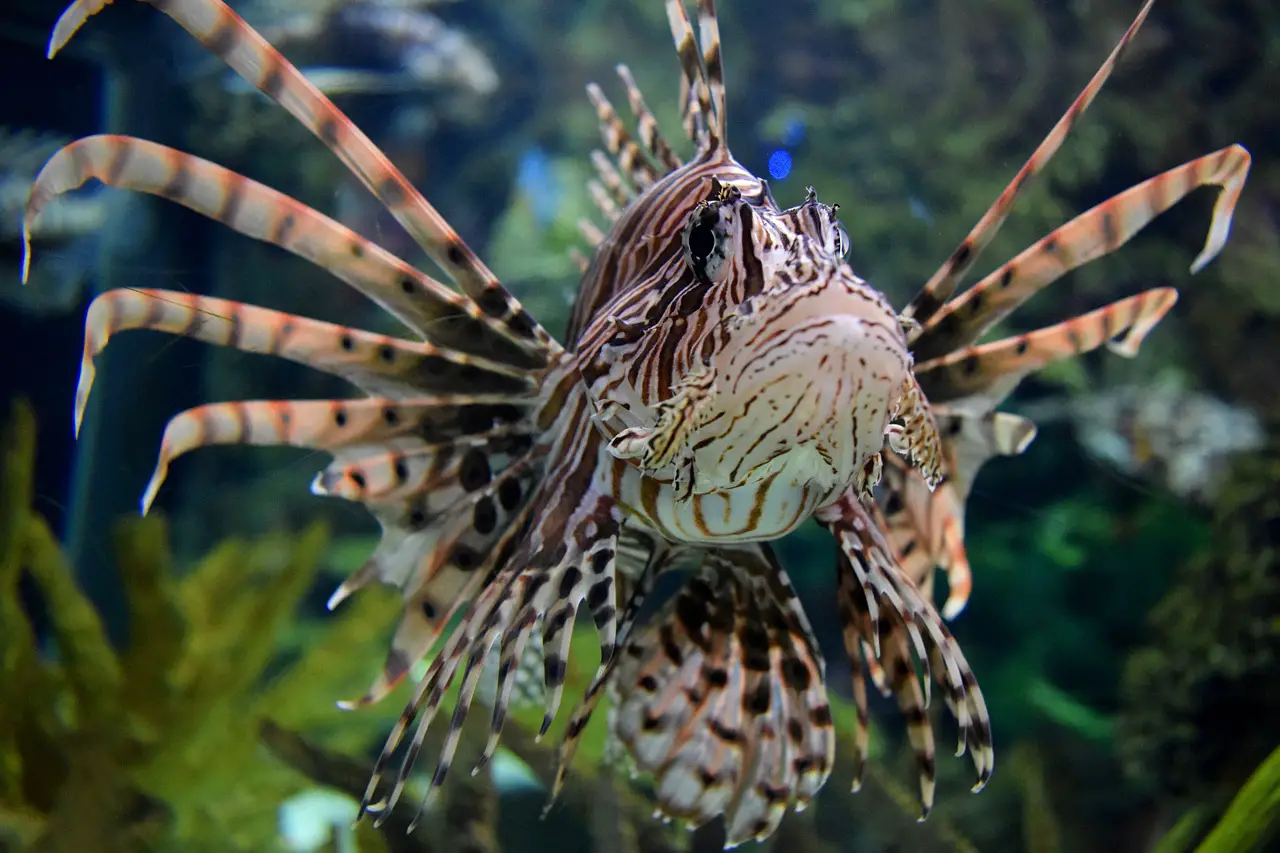Poisonous animals have long captured the imagination of humans, simultaneously invoking awe and fear. From venomous snakes and spiders to poisonous frogs and marine creatures, the animal kingdom boasts a diverse range of species equipped with toxins for defense or hunting.
Understanding these creatures is not only crucial for our safety but also plays a significant role in conservation efforts. In this article, we embark on an exploration of the fascinating world of poisonous animals, uncovering their unique characteristics, and shedding light on their importance in the natural world.
You may also want to read about ladybug poison.
What Makes an Animal Poisonous?
Before delving into specific examples, it’s important to clarify the distinction between venomous and poisonous animals. While the terms are often used interchangeably, they have distinct meanings. Venomous animals actively inject their toxins through specialized structures like fangs or stingers, usually for hunting or defense. On the other hand, poisonous animals produce toxins that are passively delivered, typically through contact or ingestion.
Various animals have evolved ingenious ways to produce and deliver toxins. Some species, such as venomous snakes, possess venom glands and specialized fangs to inject venom into their prey or potential threats. Others, like poison dart frogs, secrete potent toxins through their skin as a defense mechanism. Understanding the mechanisms by which these animals produce and utilize toxins is essential for appreciating their role in the ecosystem.
Poisonous Snakes
Snakes are often associated with venom and danger, and rightfully so. Numerous snake species around the world possess venomous characteristics, using their venom to immobilize prey or defend themselves. The venom of snakes varies in its composition and effects, ranging from neurotoxic venom that affects the nervous system to hemotoxic venom that targets blood cells and tissues.

One notorious example is the inland taipan (Oxyuranus microlepidotus), also known as the “fierce snake.” With a venom so potent that a single bite can be fatal, this Australian snake commands respect. Similarly, the black mamba (Dendroaspis polylepis) of Africa possesses a deadly neurotoxic venom, making it one of the most feared snakes on the continent.
Snakebites can have severe consequences for humans, and it is essential to exercise caution and seek immediate medical attention if bitten. Prevention, awareness, and access to antivenom are crucial in mitigating the risks associated with snakebites.
Poison Dart Frogs
Venturing into the tropical rainforests of Central and South America, we encounter the vibrant and toxic world of poison dart frogs. These small, brightly colored frogs are renowned for their potent skin toxins, which serve as a defense mechanism against predators. The striking patterns and hues of poison dart frogs act as a visual warning, indicating their toxicity.
While there are numerous species of poison dart frogs, the golden poison frog (Phyllobates terribilis) holds the title for the most poisonous. A single individual can possess enough toxin to kill several adult humans. The indigenous people of these regions historically used the frogs’ toxins to coat the tips of blowgun darts for hunting.
However, it’s worth noting that the toxicity of poison dart frogs is acquired through their diet in the wild. Captive-bred specimens, which have a different diet, do not possess the same level of toxicity.
Jellyfish and Other Marine Creatures
The world’s oceans are home to an array of venomous creatures, including jellyfish and other marine animals. Jellyfish, with their ethereal appearance, can possess venomous tentacles capable of delivering painful stings. The box jellyfish (Chironex fleckeri) and the Portuguese man o’ war (Physalia physalis) are among the most well-known venomous jellyfish species.
However, jellyfish are not the only venomous marine creatures. Cone snails, for instance, are a group of predatory snails that use venom to immobilize their prey. The venom of cone snails contains a mix of neurotoxins, some of which can be extremely potent and even lethal to humans. Other examples of venomous marine creatures include stonefish, lionfish, and certain species of octopuses.
When venturing into the ocean, it is important to be aware of potential encounters with these venomous creatures and take appropriate precautions to minimize the risk of stings or envenomation.
Poisonous Insects
Insects are abundant in our world, and some species have evolved potent defensive mechanisms in the form of toxins. Bees, wasps, and ants are prime examples of poisonous insects, equipped with venomous stingers that they use for defense or to subdue prey. When provoked, these insects can deliver painful stings, often accompanied by an immune response that can be dangerous for individuals with allergies.
For example, the Africanized honey bee, commonly known as the “killer bee,” possesses a more aggressive nature compared to its European counterparts. Although their venom is not more potent, their increased aggressiveness and tendency to swarm can make encounters with them more dangerous.
Understanding the behavior and characteristics of these insects can help minimize the risk of stings and manage any potential allergic reactions.
Venomous Arachnids
Spiders and scorpions are arachnids known for their venomous capabilities. While most spider species are harmless to humans, some possess venom that can cause discomfort or, in rare cases, pose a serious threat. The black widow spider and the brown recluse spider are two well-known examples of venomous spiders in certain regions.
Scorpions, with their iconic pincers and stingers, also possess venom that they use for hunting and defense. Certain species of scorpions, like the bark scorpion and the deathstalker scorpion, have venom with neurotoxic properties that can cause severe symptoms in humans.
Proper identification, caution, and seeking medical attention if necessary are essential when dealing with venomous arachnids.
Poisonous Fish
The ocean is teeming with diverse marine life, and some fish species have evolved venomous adaptations for defense. The lionfish, with its striking appearance and venomous spines, is a prime example. Originally native to the Indo-Pacific region, lionfish have become an invasive species in certain parts of the Atlantic Ocean, posing a threat to local ecosystems.

Another venomous fish species is the stonefish, known for its incredible camouflage and venomous spines. Found in the shallow coastal regions of the Indo-Pacific, stepping on a stonefish can result in an excruciatingly painful sting.
Awareness of these venomous fish species and their habitats can help reduce the risk of encounters and potential stings.
Other Notable Poisonous Animals
Beyond the aforementioned examples, there are numerous other notable poisonous animals with unique characteristics. The blue-ringed octopus, found in the Pacific and Indian Oceans, possesses a vibrant display of blue rings as a warning sign of its potent venom. Similarly, the poison arrow crab, native to the Caribbean, has toxins in its pincers that it uses for defense.
While encounters with these creatures are relatively rare, it is crucial to exercise caution and avoid handling or disturbing them to prevent any potential harm.
Conservation and Education
The existence of poisonous animals highlights the incredible diversity and complexity of the natural world. Understanding and respecting these creatures is crucial for their conservation and for maintaining the delicate balance of ecosystems. By appreciating their unique adaptations and the role they play in their respective habitats, we can foster a greater sense of conservation and environmental stewardship.
Education and awareness are key in promoting safe interactions with poisonous animals. Teaching individuals about the potential risks and providing information on how to prevent negative encounters can go a long way in reducing incidents and promoting coexistence.
By studying these fascinating creatures and their adaptations, scientists can also uncover valuable insights that may have practical applications in medicine, such as the development of new drugs or antivenoms.
Conclusion
Poisonous animals captivate us with their intriguing adaptations and their role in the natural world. From venomous snakes to toxic frogs, jellyfish, insects, arachnids, fish, and more, these creatures demonstrate the diversity of strategies animals have developed for survival. Understanding their characteristics and behaviors is essential for our safety and for fostering a greater appreciation of the intricacies of the natural world.
By embracing education, conservation efforts, and responsible interactions, we can coexist with these fascinating creatures and protect their habitats for generations to come.
FAQs (Frequently Asked Questions)
1. Are all poisonous animals harmful to humans? While many poisonous animals possess toxins that can be harmful to humans, it’s important to note that most of them do not actively seek out human encounters. Proper caution, respect, and avoiding unnecessary interactions can minimize the risk of harm.
2. Can humans benefit from the toxins produced by poisonous animals? Yes, some toxins produced by poisonous animals have been studied for their potential medicinal applications. For example, components of venom have been used in the development of painkillers and treatments for certain medical conditions.
3. How can I protect myself from encounters with poisonous animals? Staying informed about the local fauna, following safety guidelines, wearing appropriate protective gear, and seeking professional guidance when necessary are some of the ways to minimize the risk of encounters with poisonous animals.
4. Are all brightly colored animals poisonous? While many brightly colored animals serve as warning signs of their toxicity, not all of them are poisonous. Some species mimic the appearance of poisonous animals as a defense mechanism without actually possessing toxins themselves.
5. What should I do if I encounter a venomous animal? If you encounter a venomous animal, it is important to remain calm and slowly back away. Avoid sudden movements that may provoke the animal. If you are bitten or stung, seek medical attention immediately.
